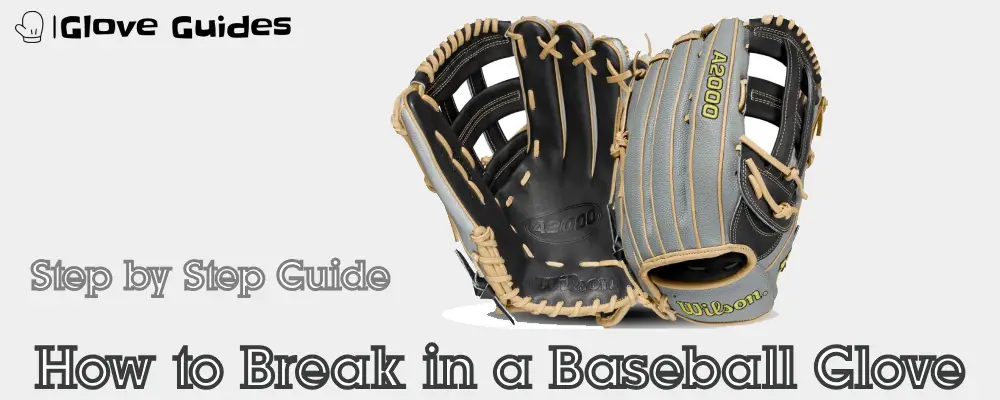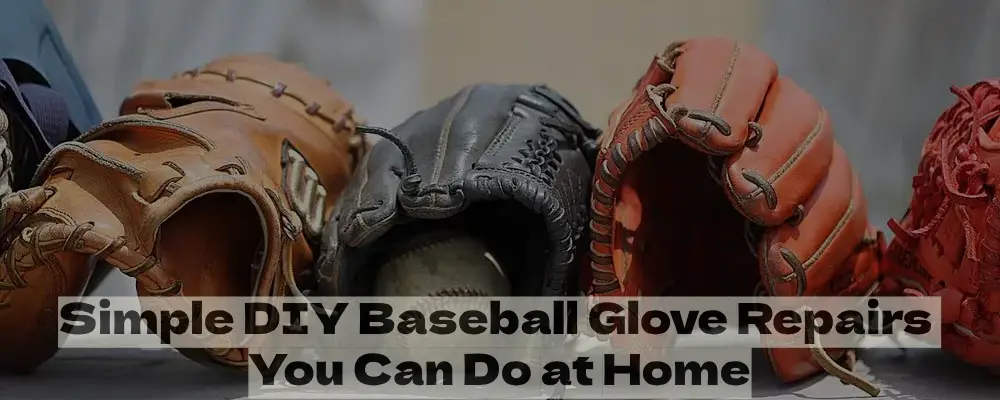A well-worn baseball glove becomes an extension of a player’s hand, a trusty companion on the diamond. But behind the stitched seams and personalized embroidery lies a crucial element: baseball glove leather. Not all leathers are created equal, and understanding their nuances can significantly impact your playing experience.
As we go deep into the fascinating variety of baseball glove leathers, exploring its diverse types, break-in times, durability, and ultimately, answering the burning question: does it matter? Get ready to discover the perfect leather match for your unique playing style and level, unlocking the full potential of your glove and elevating your game to new heights.
Types of Baseball Glove Leathers

Cowhide:
- Common and Affordable: Cowhide is the go-to choice for many baseball players due to its widespread availability and reasonable price. It’s readily accessible in most sports stores and online retailers, making it a convenient option for players of all levels.
- Performance and Durability: While cowhide offers decent performance and durability, it may not be as robust as some other types of leather. With regular use, it can show signs of wear and tear more quickly, especially if subjected to harsh playing conditions.
- Faster Break-in Time: One of the perks of cowhide is that it typically requires less time to break in compared to other leathers. This means you can get your glove game-ready sooner, allowing you to focus on honing your skills on the field.
Steer Hide:
- Durable and Strong: Steer hide is a type of leather obtained from older cows, providing durability and strength. It shares similarities with cowhide but is often denser, making it a robust option for players seeking a tough and long-lasting glove.
- Balanced Performance: Steer hide strikes a balance between the affordability of cowhide and the premium quality of full-grain or kip leather. It offers solid performance without breaking the bank.
- Moderate Break-in Time: Steer hide generally requires a moderate break-in period. It’s not as quick as cowhide but not as lengthy as full-grain, providing a good compromise for players looking for a durable glove with a reasonable break-in time.
Kip Leather:
- Soft and Lightweight: Kip leather is prized for its softness and lightweight nature, making it incredibly comfortable to wear during long games or practice sessions. The supple texture allows for effortless movement and quick reaction times on the field.
- Excellent Flexibility and Quick Response: Infielders, who rely on swift reflexes and agility, often prefer kip leather gloves for their exceptional flexibility and responsiveness. The glove moves fluidly with your hand, ensuring you can snatch up ground balls and make accurate throws with ease.
- Higher Cost: While kip leather offers premium quality and performance, it typically comes with a higher price tag compared to cowhide or synthetic options. However, many players consider it a worthwhile investment for its superior comfort and performance benefits.
Full-grain Leather:
- Thick and Stiff: Full-grain leather is known for its thickness and stiffness, giving it a substantial feel. This makes it ideal for players who prioritize durability and reliability in their equipment.
- Superior Durability and Performance: Full-grain leather gloves are built to last, withstanding rigorous use season after season. The sturdy construction provides excellent protection for your hand while maintaining consistent performance on the field.
- Longer Break-in Time: Unlike cowhide, full-grain leather requires a longer break-in period to achieve optimal flexibility and comfort. While this may require some patience initially, the payoff is a glove that molds perfectly to your hand and playing style over time.
Other Leather Types:
- Horsehide: Horsehide leather, although less common than cowhide or kip leather, is prized for its exceptional durability and resilience. It can withstand harsh playing conditions and prolonged use without showing signs of wear.
- Synthetic Leather: Synthetic leather gloves are constructed from man-made materials designed to mimic the look and feel of genuine leather. While they may not offer the same level of durability as natural leather options, they are often more affordable and require minimal maintenance.
Kip vs. Steerhide vs. Cowhide
Comparing Baseball Glove Leather Types (does it matter?)
| Steerhide: | It comes from fully grown male cattle, making the leather thicker and heavier. Expect a robust feel with this one! |
| Kip: | This leather is from younger male cattle, offering a lighter feel and enhanced flexibility due to its thinner structure and tighter grain. |
| Cowhide: | Derived from female cattle, it has its own unique characteristics. |
What sets them apart? Age and gender make a big difference! When we hit the scales, Steerhide tips the balance, being heavier by 5 gram
Weight Comparison:
A closer inspection of weight unveils specific details. A steerhide glove tips the scales 5 grams more than kip. It’s worth noting that accurate comparison mandates identical patterns, sizes, and web styles.
Color Influence:
The color spectrum plays a role in glove weight. Darker hues, such as navy or black, tend to carry more weight due to a higher oil and dye content.
Lighter colors, like tan, present a contrasting scenario with less oil and dye, resulting in a glove that sits on the scales as a featherweight.
Grain Structure and Break-in:
The structural integrity of grain is pivotal in the glove-break-in journey. Both steer hide and Kip showcase tight grain structures, facilitating memory and shape retention during this crucial phase.
The thinner and tighter grain structure of Kip may offer an advantage in molding efficiently as the glove adapts to the hand and the game.
Manufacturing Impact:
Comparing Baseball Glove Leather Types (does it matter?)
Zooming out to the manufacturing landscape, steerhide’s larger yields make it a cost-effective choice. On the flip side, Kip, with its smaller hides, demands higher production costs, offset by its prime characteristics for glove construction.
Cowhide Characteristics:
Comparing Baseball Glove Leather Types (does it matter?)
Transitioning to cowhide, sourced from female cattle, this variant introduces a softer, lighter, and more breathable dimension to glove crafting.
Within the realm of cowhide, smooth variations tend to be stiffer, while the tumbled or pebbled iterations provide a softer feel, cleverly concealing imperfections through a tumbling process.
White Leather Challenges:
Comparing Baseball Glove Leather Types (does it matter?)
The pursuit of white leather unveils unique challenges. Stripping away color leaves a canvas that cannot easily absorb oil and dye without altering the desired pristine white aesthetic.
The dryness associated with white leather may manifest as a squeaking sound during use, a characteristic that, while not impacting performance, carries a perceptual weight.
Perceptions and Squeaking:
Squeaking in leather, including the distinct case of white leather, is often a result of friction during use. It’s a tactile reminder of the material’s inherent dryness.
Though this audible feature rarely impacts performance, personal associations may influence perceptions, particularly in the context of quality.
Factors to Consider When Choosing Leather:
i. Playing Level:
- Youth vs. Adult: Younger players, such as those in youth leagues, may benefit from gloves with softer leather like kip or cowhide, which are easier to break in. Adults, especially those in competitive leagues, might prefer the durability of full-grain or steer hide.
- Recreational vs. Competitive: For casual or recreational play, a more affordable cowhide or synthetic leather glove might suffice. Competitive players may lean towards higher-grade leather like kip or full-grain for enhanced performance.
ii. Position:
Different positions have specific glove requirements. Infielders often prefer gloves with quick response times, making kip leather suitable. Outfielders might opt for the durability of full-grain leather. Catchers generally favor sturdy gloves, often made from thicker leathers like full-grain or steer hide.
iii. Personal Preference:
Durability vs. Feel vs. Break-in Time: Your personal preferences play a crucial role. If you value durability, steer hide or full-grain might be your go-to. If you prioritize feel and quick break-in time, kip leather could be more appealing. Consider what feels comfortable in your hand and aligns with your playing style.
iv. Budget:
Leather types vary in price: While cowhide and synthetic options are more budget-friendly, premium leathers like kip and full-grain come with a higher cost. Balancing your budget with your desired level of performance and comfort is essential.
Does the Leather Type Really Matter?
Impact on Performance and Overall Experience:
- Beginners: For beginners, the type of leather can significantly impact the learning experience. Easier-to-break-in options like cowhide or synthetic leather might be more forgiving for those new to the game.
- Intermediate Players: As players progress, they may start noticing the nuances of different leathers. Intermediate players often appreciate the benefits of specific leathers based on their position and playing style.
- Professionals: Professional players often have specific preferences based on years of experience. Many prefer the tailored performance of high-quality leathers like kip or full-grain, valuing the customized feel and durability these options offer.
Conclusion:
In simple words, the kind of material used to make a baseball glove is like the different threads in a woven cloth. Each thread (or material) plays a part in how well the glove works. The type of leather, its color, and how it’s made all affect the glove’s overall character.
Choosing the right leather for a baseball glove depends on things like how good you are at playing, where you play on the field, what you like, and how much money you have. Different types of leather have their own good points, and it can make a difference in how well you play. Beginners might want something easy to use, while professionals might want something made just for them. It’s important to find the right balance that fits what you need and makes playing on the field more enjoyable and successful. If you have specific things you want to know more about, feel free to tell us!


